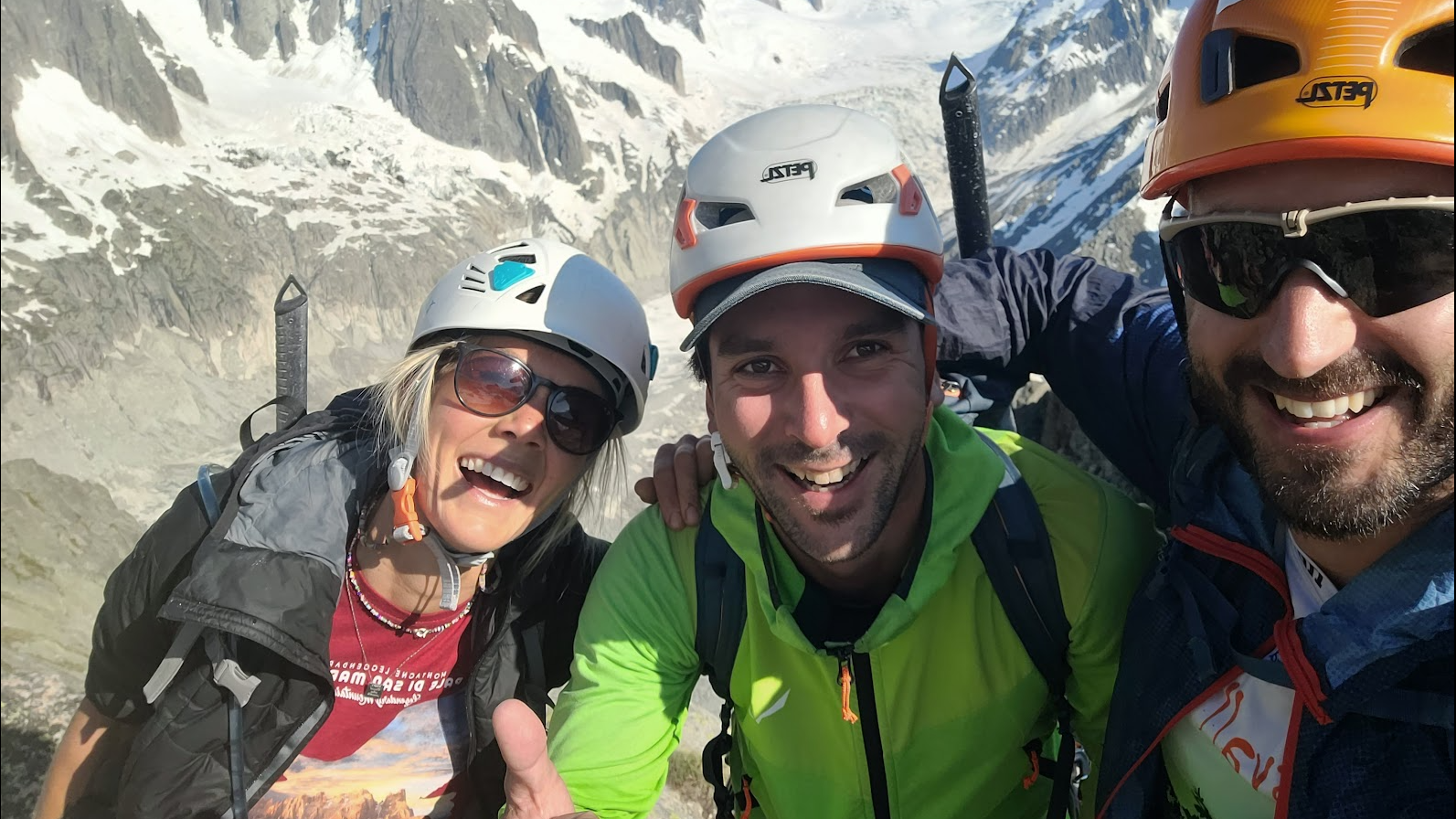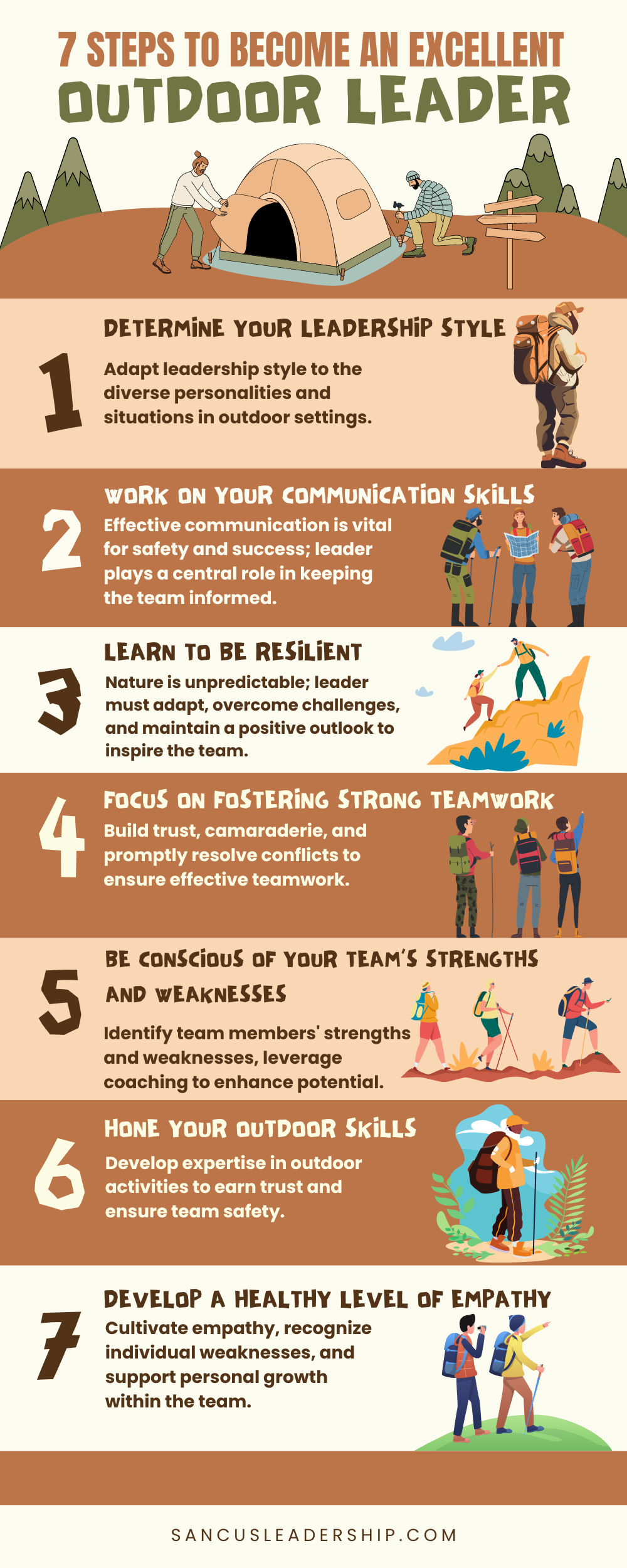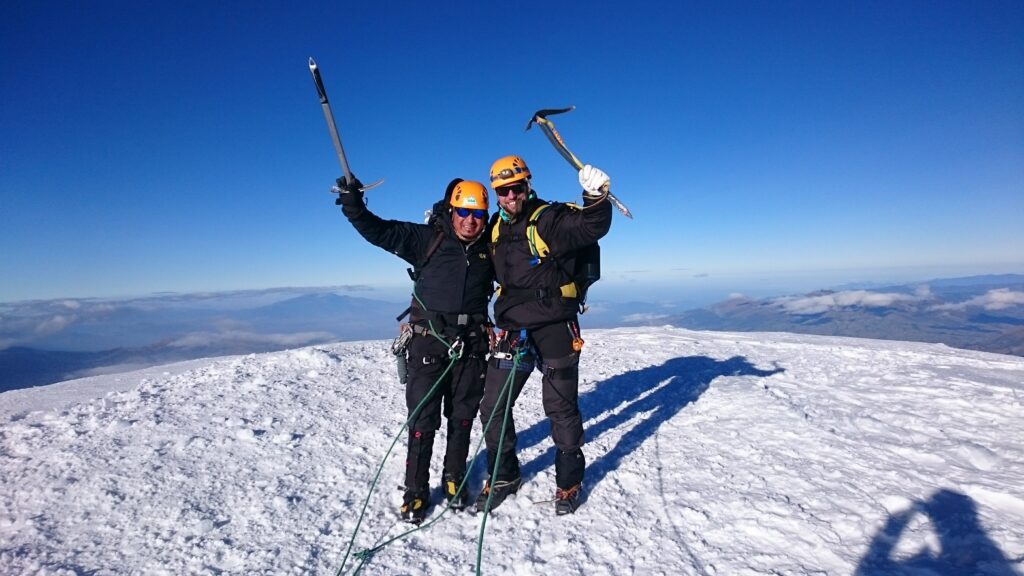Having spent more than a decade in the military, I’ve had plenty of opportunities to observe how various leaders react to critical situations in the wild. Not every Tom, Dick, and Jane is cut out to be an outdoor leader because it takes particular characteristics and vital core elements to make it. Being out in nature exposes you to many precarious situations and unforeseen challenges.
Outdoor leaders should have a keen sense of adventure, passion for their craft, and a strong inclination to be empathetic. They must be critical thinkers, good decision-makers, and skilled communicators. Core values like integrity, stewardship, and responsibility must be deeply ingrained in them.
In this article, I’ll share with you the personality traits I perceive as essential in an effective outdoor leader. We’ll discuss how these characteristics and core elements can set you apart from the rest and make your experiential pursuits more meaningful, exhilarating, and productive for you and your teams.
The Character of An Excellent Outdoor Leader!
If we pool the best outdoor leaders in one room, there’s a high probability that we’ll easily spot many similarities in their characteristics and personalities. Not everyone is cut out to be an outdoor leader, so if you observe these traits in yourself, chances are you’ll thrive and excel in this field.
If you think you have what it takes to be an excellent outdoor leader, book a free call with us! At Sancus Leadership, we’re always excited about helping future outdoor leaders further enhance their skills and enrich their experiences with experiential training.
Here are some essential personal traits that make up an excellent outdoor leader:
1. Adventurous
This is perhaps the common denominator for all aspiring outdoor leaders. You must have a strong aptitude for adventure because this is where activities in outdoor leadership are grounded on. It would not be uncommon to find outdoor leaders choosing the road less traveled because it offers more adventures and new opportunities for exploration.
Outdoor leaders are essentially intrepid explorers, eager to uncover new secrets in nature, go on daring escapades, and take advantage of all the learnings that the environment has to offer.
2. Passionate
Outdoor leaders are passionate about what they do. They love spending time outdoors, engaging in various adventures and experiential learning, and influencing other people to see and experience for themselves the beauty of nature as well.
Their intense love for the outdoors pushes them to essentially be stewards of the environment. They love connecting people with nature and showing them how to responsibly enjoy all it has to offer. Whether it be through hiking, whitewater rafting, or camping, an outdoor leader can be counted on to extract both fun and learnings from the experience.
3. Proactive
In the outdoors, it’s crucial to identify, anticipate, and prevent potential disasters before they even occur. Sometimes, an outdoor leader’s courage and take-charge attitude can spell the difference between life and death. In this aspect, preparedness is key to being proactive.
Although you’re expected to set goals and map out a plan for your team, you must also be adaptable, especially since nature is very unpredictable. Conditions can change quickly, and you must always be ready to react appropriately to these unforeseen challenges.
Whether it’s about breaking camp early and heading back to town because of a looming storm or altering your hiking route because a team member collapsed from nausea during a particularly steep climb, you, as the leader, must be flexible and willing to adjust to varying circumstances.
4. Strategic Thinker
It’s crucial that outdoor leaders can think on their feet and come up with the smartest and most strategic solutions to difficult situations. Great problem-solving skills and strategic thinking are critical in ensuring that goals are met and your team is always safe and secure in the outdoors. A good leader must be able to quickly assess potential risks to the team and come up with the most viable solutions to problems.
A leader’s decision-making skills are essential, but it doesn’t mean that the whole team must completely rely on the leader for every resolution that needs to be made. Most of the time, transparency is key to forging trust and teamwork, and when it comes to decision-making, openness and honesty will play significant roles in ensuring that the best solutions are formulated and carried out.
5. Effective Communicator
Outdoor leaders must be excellent communicators since spoken words, gestures, signals, and body language can prove to be reliable tools in the wild. You and your team members must always be on the same page and aligned with the goals whenever you’re out on an excursion.
Effective outdoor leaders always ensure that messages are delivered as clearly and accurately as possible. They also take time out from accomplishing other tasks to ensure each team member has a firm grasp on the relevance and importance of the information conveyed.
In my 12 years in the military, strong communication skills were always at the forefront of effective leadership. Troop leaders made sure that all pertinent messages were concisely delivered at the start of each morning and that all team members have fully absorbed all the information. They leave no room for misconceptions, doubts, and confusion.
Regular check-ins are common to verify that the team remains in sync and aligned with the set objectives. Whenever necessary, proactive leaders demonstrate exactly what needs to be done to further avoid potential problems that stem from mix-ups and misinterpretations.
6. Empathetic
The best outdoor leaders are those that exhibit high levels of emotional intelligence, capable of discerning and controlling their own feelings and sentiments. They also have strong interpersonal skills, and can easily show empathy to their team members by being sensitive to their needs and feelings.
Empathetic outdoor leaders spend time and exert effort in building relationships and being aware of their team members’ strengths, weaknesses, and limitations. They display authenticity in the way they deal with others and listen actively to their insights and concerns. They learn from their experiences, ensuring that complications will not be repeated and conflicts are quickly resolved so that the team stays on track toward the attainment of common goals.
7. Demonstrates Strong Outdoor Leadership Core Values
Your core values are the basic aspects, foremost priorities, and guiding principles that define your brand of leadership. These are what set you apart from the rest and establish you as a reliable, effective, and worthy leader.
Here are some of the core values inherent in the best outdoor leaders:
- Trust. It is essential for a team exploring the wild outdoors to trust one another, most especially their leader. To foster trust, outdoor leaders must first earn their team’s trust by showing they’re worthy of it. This can be done by ensuring their words and actions display honesty, respectability, fairness, and transparency.
- Integrity. A leader with high moral and ethical standards can quickly earn the trust and deference of the team.
- Stewardship. Good outdoor leaders always keep in mind that they are the stewards of their team and the protector of nature. They see to it that their team members’ needs are addressed. They promote and inculcate the gravity of preserving nature by doing simple tasks such as picking up litter, respecting wildlife, and helping to conserve the environment.
- Taking ownership. Outdoor experiences place people in situations where mistakes, misunderstandings, and confusion can bring about disastrous consequences. Taking responsibility for your actions, whether good or bad, is crucial in outdoor leadership because it is a powerful way to earn your team’s trust and respect.







